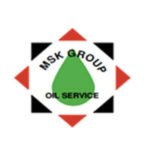ISO 45001:2018, developed by the International Organization for Standardization (ISO) and recognized under the International Accreditation Forum (IAF), sets out globally accepted requirements for managing occupational health and safety (OHS).
The standard helps organizations identify workplace hazards, assess risks, and build a culture of prevention aligning with Iraqi labour regulations, IQAS (Iraqi Accreditation System) standards, and OSHA principles.
In high-risk industries like oil & gas, construction, and manufacturing, ISO 45001 Certification demonstrates your company’s commitment to employee well-being, safety compliance, and continuous improvement (PDCA cycle) essential for both reputation and contract eligibility.
Hundreds of Iraqi companies trust AGS IRAQ for professional safety management consulting and ISO 45001 audit preparation.
AGS IRAQ simplifies ISO 45001 implementation through a proven 5-step process tailored for local industries and regulatory frameworks.
Define your organization’s safety objectives, responsibilities, and legal obligations under Iraqi and international standards.
Conduct comprehensive workplace hazard assessments, analyze equipment safety, and identify potential incidents or exposure risks.
Create a structured Occupational Health and Safety Management System (OHSMS), including a health & safety policy, risk assessment report, and standard operating procedures.
Evaluate system performance and prepare for external auditing through ISO 45001 audit checklists and management reviews.
AGS IRAQ’s certified auditors conduct Stage 1 (documentation review) and Stage 2 (on-site assessment) audits. Post-certification, we provide surveillance audits and continuous improvement support to maintain compliance.
Satisfied Clients
Years of Experience
ISO certifications
Our Others ISO Certifications































